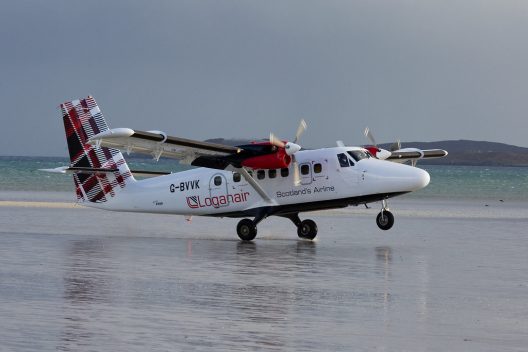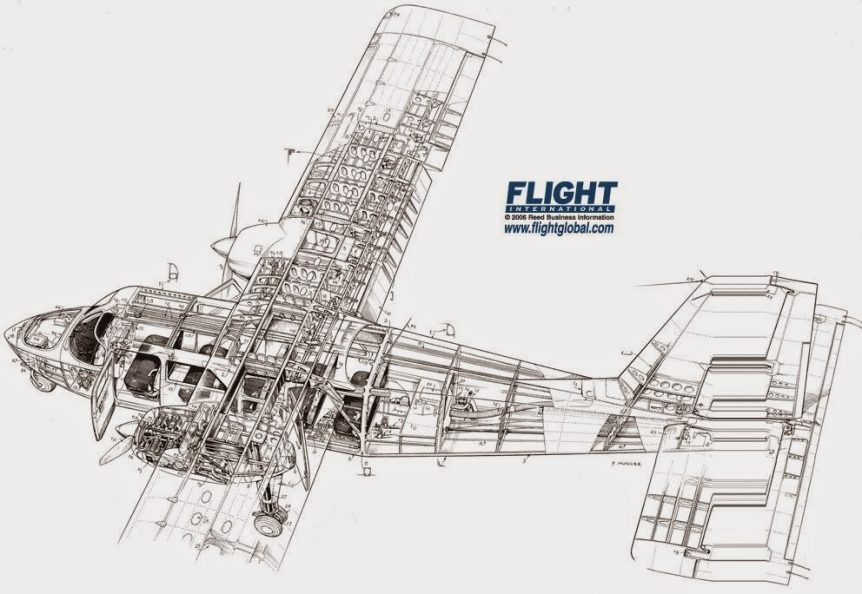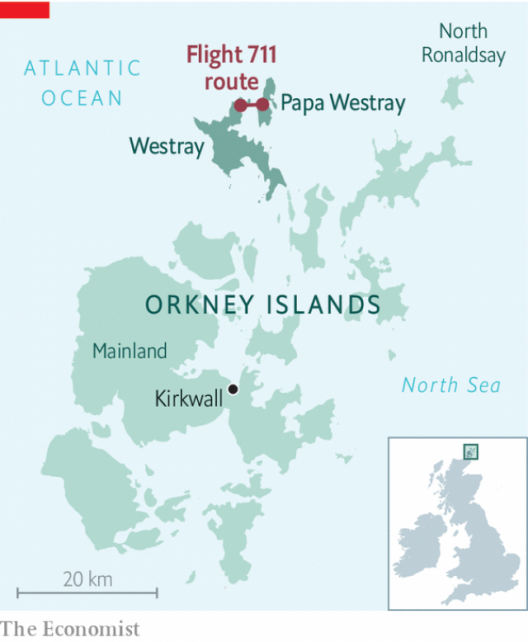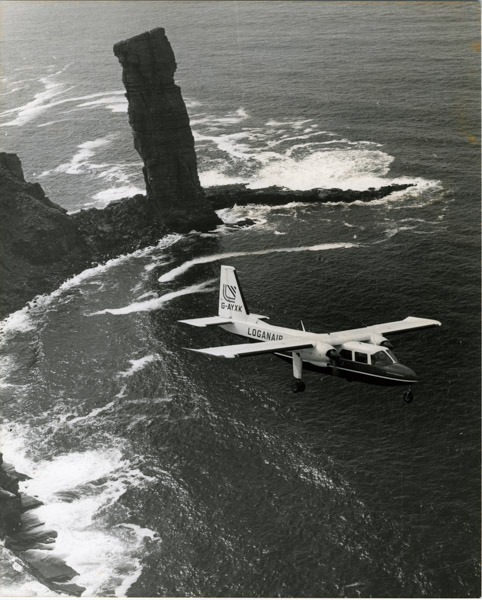An Eccentric Problem
It seems quaint and charming, typically British as we used to understand them from vintage films. The idea of taking a 1.7 mile flight from Westray in the Orkney Islands to Papa Westray within visual range may seem a bit eccentric. The landing on the beach at low tide seems even more so. Loganair, which serves the Orkney Islands, experiences many ups and downs in a day, their longest flight taking a mere 15 minutes.
Twice-a-day flights between the Westrays can be disrupted by North Sea weather, as can boat passages between the islands, which often take two turbulent hours. Obligingly, the airline offers flex tickets good for essentially – whenever. Fares seem reasonable, though, a one-way trip either way costing 7.25 Pounds ($8.72).
Beyond the scheduling difficulties, operation of air-cooled engines for such short flights does not promote long periods between overhauls. Electric motors are ideal for such duties.
A Reasonable Solution
Cranfield University in the United Kingdom specializes in graduate level aeronautical design and testing, so the idea of electrifying the world’s shortest airline flight seems like a great opportunity to attack a real-world problem. Named “Project Fresson” after Scottish aviation pioneer Earnest Fresson, the program will electrify the carrier’s two twin-turboprop Norman-Britten Islanders. Project leaders hope to gain EASA (European Aviation Safety Agency) approval by 2021 or 2022 for the world’s first commercial electric air transport routes.
As reported here recently, Harbour Air in Vancouver, BC and Seattle, Washington is striving toward that honor, with the possibility or flying their first electric DeHavilland Beavers and Twin Otters by year’s end.

Soft field landing training is of great importance for Loganair pilots. Twin Otters are larger than Islanders
Loganair, in the meantime has been negotiating with “local government organizations” including “positive discussions” with Highlands and Islands Enterprise, HITRANS ( Highlands and Islands Transport Partnership) and HIAL (Highlands and Islands Airports Ltd.)
As quaint as a 50-second crossing may seem, it is of great import to the islanders. The Scotsman reports, “James Stockan, leader of Orkney Islands council, said: ‘Our inter-island air service provides a lifeline for our more remote communities and is subsidized by the council.” At the economic level, “We are keen to see if this project could significantly reduce the amount of expensive aviation fuel required to run the service and, most importantly, if this can be done safely.”
The Economist adds, Orkney is already a leader in green energy. It generates more wind power than it consumes—it sells electricity to the national grid—has the highest rate of electric-vehicle ownership in Scotland and is experimenting with batteries to store excess energy. The council is working on a scheme to introduce hydrogen-powered ferries in 2021. If all goes according to plan, Loganair’s e-planes should take off the following year.”




Comments 1
How will it even get off the ground? We all know the Islanders lift is proportional to the noise and vibrations it makes. Would one now actually have to look at a guage inorder to sync props rather then by then by ear?
(Editor’s Note: Obviously from an Islander’s fan. We have a Beech Baron that flies over the house several times a day, training novice multi-engine pilots. The pilot’s level of skill can be determined by the asynchronous howls from the two engines. Surely some Islanders are quieter than others, and electric ones will never be heard above the noise of the surf.)